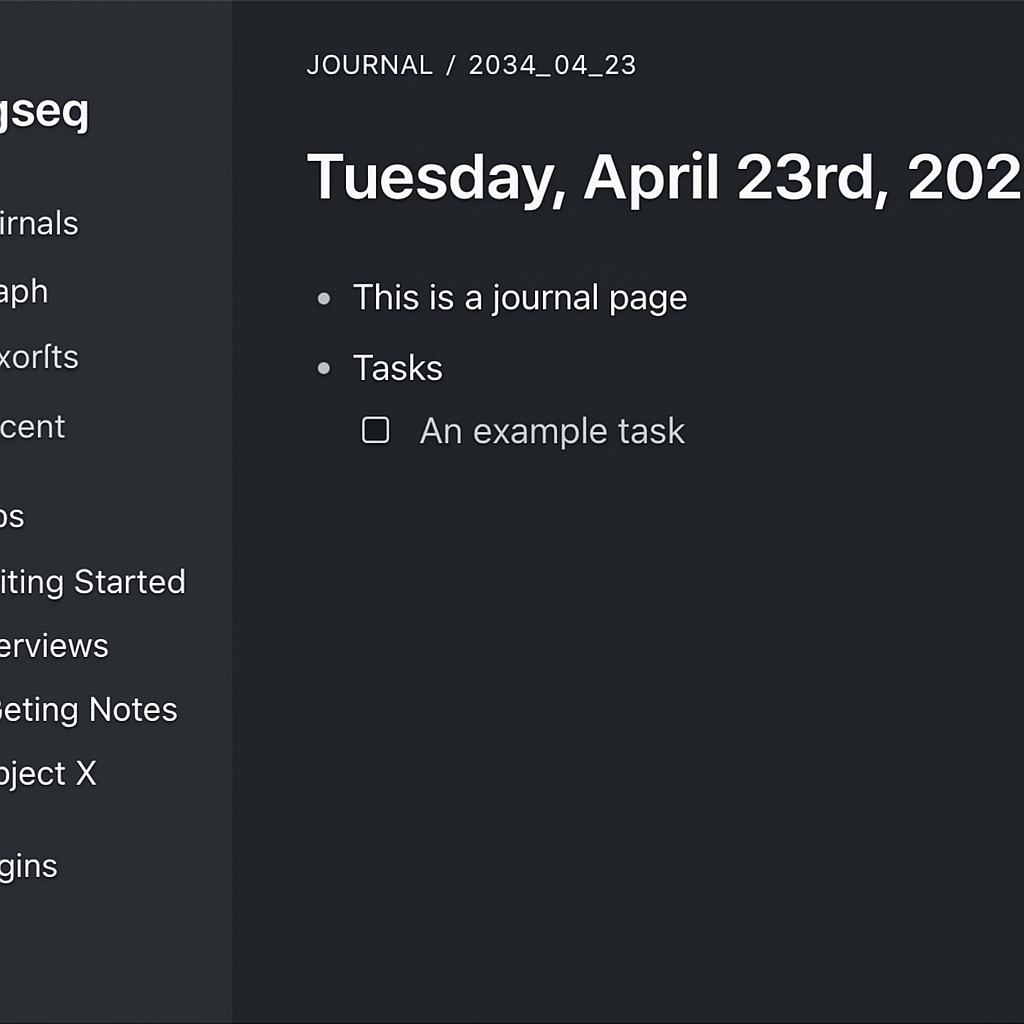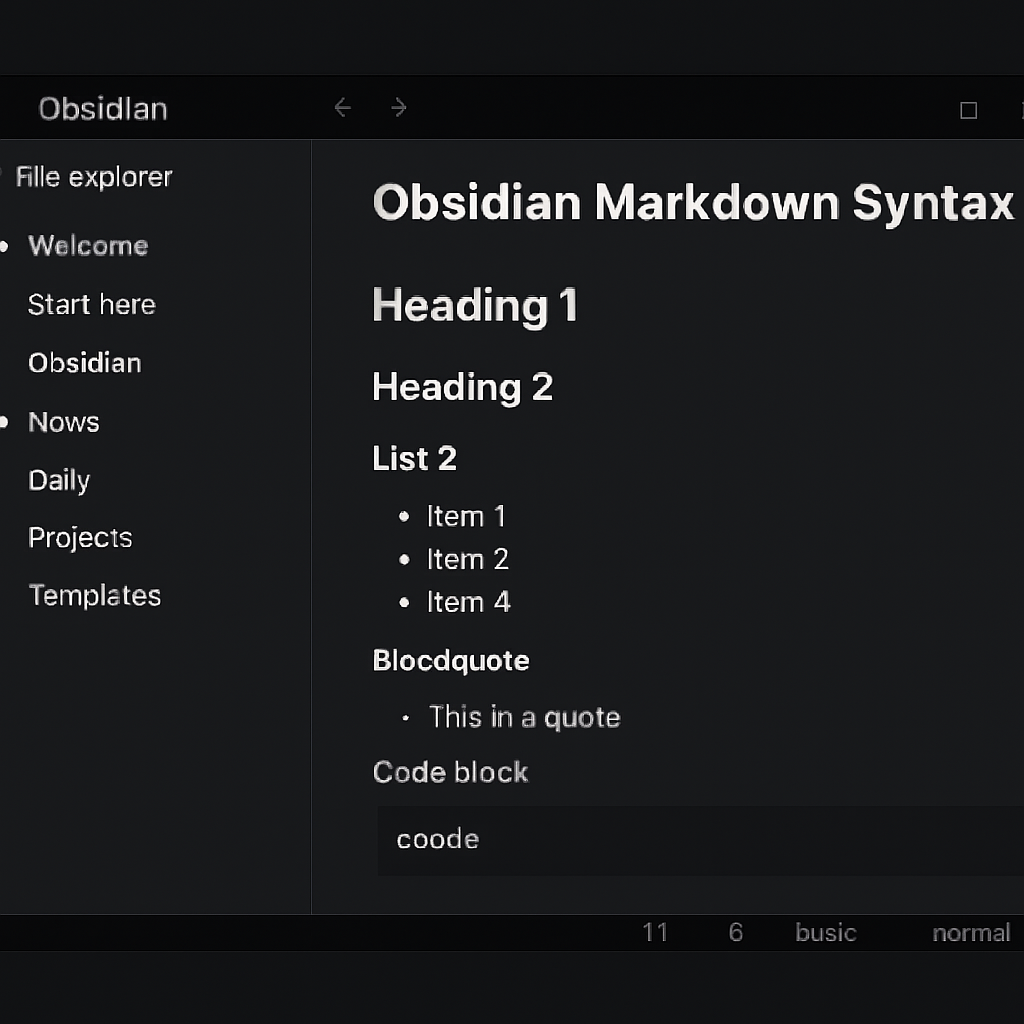In the world of note-taking and knowledge management, two names frequently pop up: Logseq and Obsidian. Both are powerful tools that cater to the needs of digital note-takers, writers, and productivity enthusiasts. But which one stands out as the superior choice? Let’s delve into the features, benefits, and distinct capabilities of each to help you make an informed decision.
 What Are Logseq and Obsidian?
What Are Logseq and Obsidian?
Logseq and Obsidian are applications designed to help you organize, store, and manage your notes using Markdown. They are part of a new wave of digital notebooks that prioritize flexibility and user control. While they share some similarities, each platform offers unique features that may cater to different user preferences.
The Rise of Markdown-Based Note-Taking
Markdown has become a cornerstone in digital note-taking due to its simplicity and versatility. Both Logseq and Obsidian harness the power of Markdown to offer users a seamless writing experience. Markdown allows for easy formatting without complex commands, making it accessible to both beginners and advanced users. This simplicity encourages a focus on content over presentation, which is critical in knowledge management.
Flexibility and User Control
Both platforms prioritize user control, giving you the freedom to organize your notes as you see fit. This flexibility is crucial for users who want to customize their knowledge management systems. Unlike traditional note-taking apps, Logseq and Obsidian allow you to structure your notes in a non-linear fashion, reflecting the way human brains naturally associate ideas. This means your notes can evolve alongside your thought processes.
Similarities and Differences
While Logseq and Obsidian share a foundation in Markdown and user control, they diverge in their approach to note-taking. Logseq focuses on outlining and task management, while Obsidian emphasizes graph visualization and customization. These differences cater to distinct user needs, making it important to understand your priorities before choosing a platform. Whether you prefer a structured outline or a dynamic visual map, there’s a tool that fits your style.
Logseq: A Brief Overview
Logseq is an open-source outliner designed for knowledge management and task management. It supports plain text Markdown files, making it easy to sync across different devices. Logseq focuses on creating a personal knowledge graph, where you can interlink your notes and ideas seamlessly.
Open-Source and Community Driven
Being open-source, Logseq benefits from a vibrant community that contributes to its development. This community-driven approach ensures that the tool evolves based on user feedback and needs. Open-source software often fosters innovation, as users can suggest features or even develop their own extensions. This collaborative environment leads to a tool that is constantly improving and adapting to the needs of its users.
Outlining and Task Management
Logseq is built around the concept of outlining, allowing users to organize thoughts hierarchically. This method is particularly effective for breaking down complex projects into manageable tasks. The outlining feature promotes clarity and focus by encouraging users to map out their ideas systematically. It is ideal for those who want to maintain a clear overview of their work and responsibilities.
Personal Knowledge Graph
Logseq’s knowledge graph offers a visual representation of how your notes are interconnected, helping users see the bigger picture. This feature is instrumental in identifying patterns and connections between disparate ideas. By visualizing these relationships, you can gain new insights and understanding of your content. The knowledge graph is a powerful tool for anyone looking to enhance their cognitive mapping and idea synthesis.
Obsidian: A Brief Overview
Obsidian, on the other hand, is a powerful knowledge base that works on top of a local folder of plain text Markdown files. It provides a robust graph view for visualizing connections between your notes, making it ideal for those who thrive on visual learning and organization.
 Local Storage and Privacy
Local Storage and Privacy
One of Obsidian’s key advantages is its reliance on local storage, granting users full control over their data. This is crucial for individuals concerned about privacy and data security, as it eliminates dependence on cloud services. By storing notes locally, users can ensure that sensitive information remains secure and accessible only to them. This feature appeals to those who prioritize data sovereignty in their digital tools.
Graph View for Visual Learners
Obsidian’s graph view is a standout feature, offering a visual map of all your notes and their interconnections. This visualization aids in exploring relationships and discovering insights quickly. For visual learners, this feature transforms abstract data into understandable patterns and clusters. It supports a more intuitive approach to knowledge management, making it easier to navigate complex webs of information.
Customization and Plugins
Obsidian boasts a rich ecosystem of plugins and themes that allow for extensive customization. This flexibility enables users to tailor the tool to their specific workflow and aesthetic preferences. Whether you wish to enhance functionality or alter the appearance of your workspace, Obsidian’s plugin library offers numerous possibilities. This adaptability is particularly appealing to users who want a personalized note-taking experience.

Key Features of Logseq
Outlining and Task Management
Logseq is built around the concept of outlining. This feature allows users to easily organize their thoughts in a hierarchical structure. It’s particularly beneficial for project planning and task management, where breaking down tasks into smaller, manageable pieces is crucial.
Block References and Embedding
One of Logseq’s standout features is its block references and embedding. This feature allows users to link specific blocks of text within different notes, making it easy to reference and reuse information without duplication.
Personal Knowledge Graph
Logseq’s knowledge graph is a visual representation of how your notes are interconnected. This feature helps users see the bigger picture, making it easier to connect ideas and find related information.
Key Features of Obsidian
Local Storage and Privacy
Obsidian stores all your notes locally, meaning you have complete control over your data. This is a significant advantage for users concerned about privacy and data security, as you’re not reliant on cloud services.
Graph View
Obsidian’s graph view is one of its most praised features. It offers a visual map of all your notes and their interconnections, allowing you to explore relationships and discover insights at a glance.
Customization and Plugins
Obsidian boasts a rich ecosystem of plugins and themes that allow for extensive customization. Whether you want to change the look of your workspace or add new functionalities, there’s likely a plugin for it.

Logseq vs Obsidian: A Feature Comparison
Note-Taking and Markdown Support
Both Logseq and Obsidian support Markdown, making them excellent choices for those who prefer writing in plain text. However, Logseq’s emphasis on outlining provides a more structured approach to note-taking, which some users may find more intuitive for organizing complex information.
Collaboration and Sharing
When it comes to collaboration, Logseq allows for real-time collaboration, which can be a deciding factor for teams or individuals who need to work together closely. Obsidian, while excellent for personal note-taking, does not natively support collaborative editing, though there are plugins available that can add this functionality.
Customization and Plugins
Obsidian takes the lead in customization with its extensive plugin library. From adding to-do lists to integrating with other productivity apps, Obsidian’s plugins make it highly adaptable to individual needs. Logseq, while also offering plugins, does not have as extensive a library, but its open-source nature allows users to develop custom solutions.
Use Cases: When to Use Logseq and When to Use Obsidian
Logseq for Meeting Notes and Task Management
Logseq is particularly useful for users who need an efficient way to manage tasks and meeting notes. Its outlining capabilities and task management features make it ideal for this purpose.
Obsidian for Personal Wikis and Knowledge Bases
Obsidian shines when it comes to building personal wikis and knowledge bases. Its graph view and local storage make it perfect for users who want a secure, visual approach to organizing their thoughts and research.
Community Insights: Logseq vs Obsidian on Reddit
The debate between Logseq and Obsidian is a hot topic on platforms like Reddit. Users often compare the two based on their unique needs and preferences. Common threads highlight Logseq’s superior outlining and task management, while Obsidian is frequently praised for its visual graph view and plugin ecosystem.
Conclusion: Which Should You Choose?
The choice between Logseq and Obsidian ultimately depends on your specific needs. If you prioritize task management and real-time collaboration, Logseq might be the better option. However, if you want extensive customization, privacy, and a powerful graph view, Obsidian could be the way to go.
Both platforms offer robust features that make them excellent choices for digital note-taking and knowledge management. Consider experimenting with both to see which aligns best with your workflow and preferences.
Ultimately, the best tool is the one that helps you stay organized, productive, and inspired.


